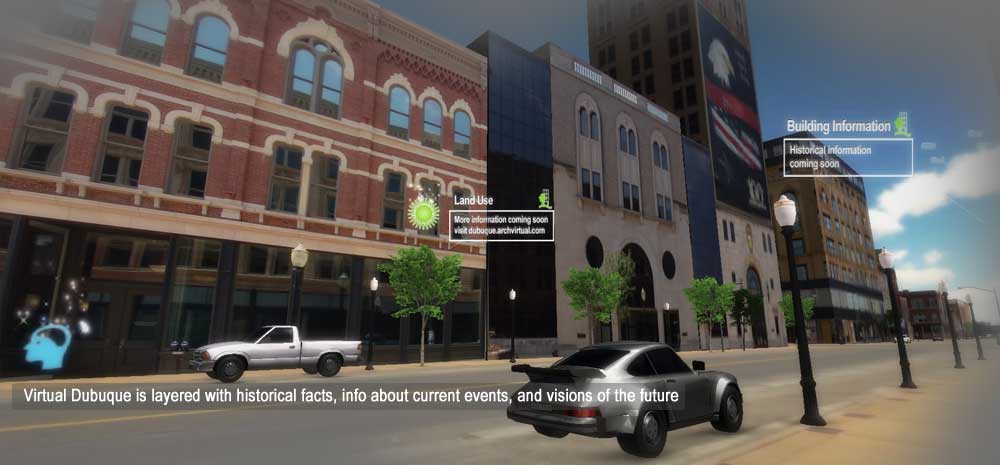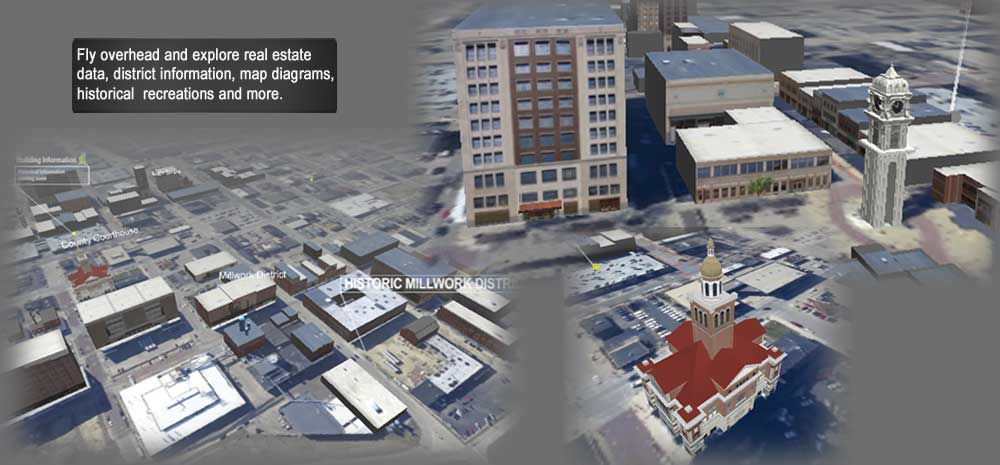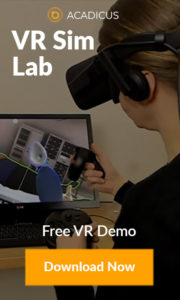Introducing Virtual Dubuque, a premiere development of our new Realtime Cities initiative by Arch Virtual. This new community resource will provide free and easy to access windows into interactive, customizable 3D models of cities. To learn more about how we can build a realtime model of your city or architectural project, send us a note here. We’re currently seeking development partners to build new features, create custom content, and build out additional architecture and cities around the world, so please send us a note to learn more.
Over the past year,we have been partnering with local businesses and organizations in Dubuque, Iowa to develop features and sponsored content, including a project in the Historic Millwork District for a local real estate developer (coming soon!), as well as the Masonic Temple, where international members of Demolay will be working with industry pioneers in developing a world-class learning environment, using Virtual Cities as its core platform.
“We’re harnessing the same technology used to make the latest iPad apps and XBox 360 games, but we’re not making a game, we’re building dynamic and ever-changing models of cities that are designed to serve as true community resources that can be easily accessed directly from a website,” said Jon Brouchoud, Founder of Virtual Cities.
Using ArchTech Engine and the Unity3D platform, we’re now able to transforms buildings, geography and entire cities into realtime 3D environments that are easily accessible, and can be embedded on your website, or deployed to a tablet. These interactive models can be geo-referenced to real-world coordinates, dynamically linked to databases, and layered with interactive content.

As visitors explore virtual cities, links to websites and additional information about nearby buildings, parks, and businesses appear automatically. For example, when you approach a restaurant, you can click through to read their menu. If you’re near a historic building, you can learn more about its past. Businesses and organizations can customize and enhance their space in the virtual model, layering it with more information or interactive features.
Proceeds from sponsorship and custom content are then re-invested in the ongoing development of the city model, enabling Realtime Cities to add more features, build new parts of the city, and refine models with more detail.
But a virtual replica is just the beginning.

“If you’ve ever experienced the Voices Gallery in the Millwork District of Dubuque Iowa, for example, you’ve seen how a building can be completely re-imagined into a destination that celebrates the unique architectural character of a place, yet transcends it to become something completely unique,” said Brouchoud.
“That’s really what Virtual Dubuque, and the Realtime Cities initiative is all about. A replica of the city as it is now will certainly have interesting use cases, but I’m looking forward to seeing how cities can be re-imagined within an environment where anything is possible.”


